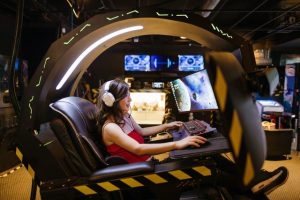
You can’t argue with the continous advancement of technology, but there are some of the absurdities of the last few decades.
Changing fonts can help you save money on printer ink.
That’s right, not all fonts are created equal. Fonts are created for a variety of purposes, including conveying a message, decoration, embellishment, and iconography. If you only print with inkjet printers that use old-style cartridges (not ink tanks or toner-based laser printers), switching to one of the lighter fonts will likely save you about 10% ink.
Before the internet, there was email.
You probably don’t even think twice before sending a one-line email message. But it wasn’t always so simple. The YouTube video “How to Send an Email – Database – 1984” is intriguing.This was from a techTV show called Data base, and the presenters showed what it took to send an email back then.
QWERTY was designed to slow you down.
There are two theories about this. When you look at manual typewriters, the first one makes sense. If someone typed too quickly, the keys would jam. QWERTY separated common alphabets and slowed typists.
Another theory is that telegraph users designed the QWERTY layout to make Morse code easier (and faster) to decipher.
92 percent of the world’s currency is digital.
All black money comes from this 8 percent. This is a reasonable estimate on which economists appear to agree, rather than an exact figure. This low percentage appears absurd, but when you think about it, it makes sense given that most large transactions are done electronically anyway.
Registration of domain names was free until 1995.
Nobody knew what the internet was capable of back then, so this was a huge opportunity for people to own all kinds of domain names. In 1995, a company called Network Solutions was granted the right to charge people for domain names. It was also expensive, with prices starting at $100 for two years of registration.
Russia developed a water-powered computer in 1936.
Prior to the miniaturization of transistors, computers used a much more visible counting system: gears, pivots, beads, and levers were frequently used, and they required some sort of power source to function.
In 1936, Vladimir Lukyanov built something similar, but he used tap water to create a computer that can solved partial differential equations. Images of the Lukyanov computer show a complex system of interconnected tubes filled with water.

